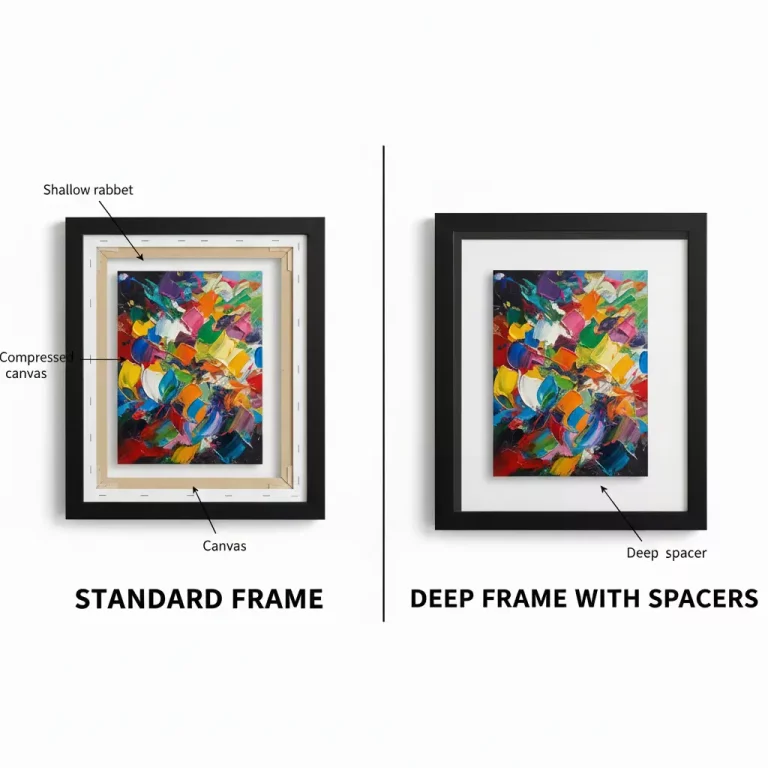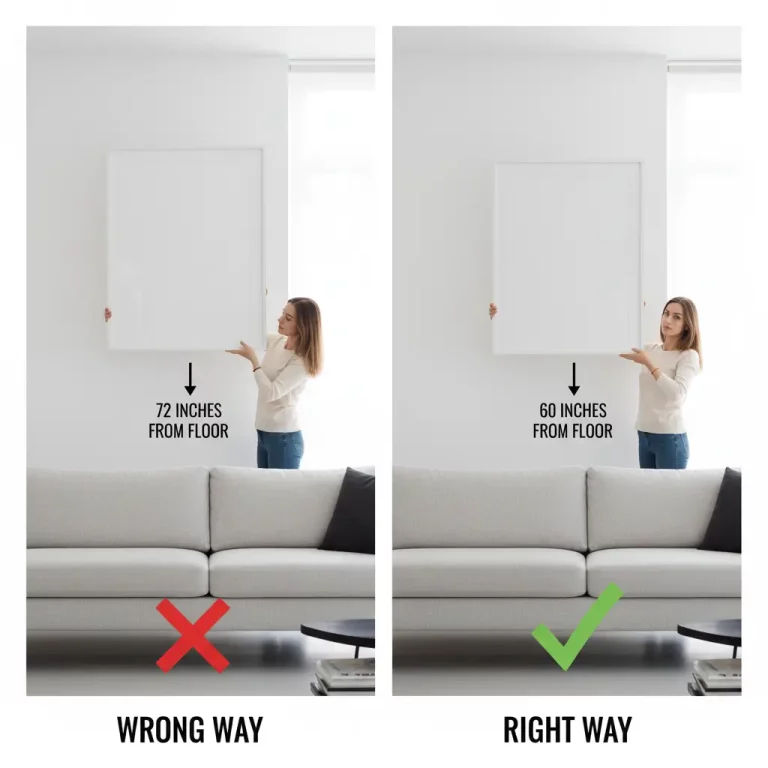Are you standing in the art supplies aisle, overwhelmed by the countless painting surfaces available? The choice between traditional stretched canvases, canvas pads, and acrylic canvas boards can feel daunting, especially when you want to create your best work.
Acrylic canvas boards offer a compelling middle ground that many artists overlook. These versatile painting surfaces combine the familiar texture of canvas with the stability and affordability that both beginners and experienced artists crave. Unlike flimsy canvas pads that buckle under wet paint or expensive stretched canvases that can be intimidating for practice work, acrylic canvas boards provide a reliable foundation for your artistic expression.
Whether you’re a weekend warrior exploring watercolours, a student building your portfolio, or a professional artist sketching out ideas, understanding the benefits of acrylic canvas boards can transform your painting experience. Let’s explore why these unassuming painting surfaces might just become your new favourite artistic companion.
What Are Acrylic Canvas Boards?
Acrylic canvas boards consist of canvas material mounted onto a rigid backing, typically made from cardboard or MDF (medium-density fibreboard). The canvas surface receives a primer coating, creating a ready-to-paint surface that accepts various media, including acrylics, oils, and mixed media.
The construction process bonds the canvas fabric to the backing board using industrial adhesives, eliminating the air gaps and bounce found in stretched canvases. This creates a firm, stable surface that won’t flex or move as you apply paint, making them particularly suitable for detailed work and techniques requiring precision.
Most acrylic canvas boards come pre-primed with gesso, saving you preparation time and ensuring consistent paint adhesion. The boards are available in various sizes, from small 5×7 inch panels perfect for studies to larger formats suitable for finished pieces.
Key Benefits of Acrylic Canvas Boards
Superior Stability and Control
The rigid backing of acrylic canvas boards provides exceptional stability compared to stretched canvases. When you’re working on detailed areas or using heavy paint application techniques, the board won’t flex or bounce under your brush pressure. This stability proves invaluable for:
- Detailed work: Fine lines and intricate details become much easier to execute
- Heavy paint application: Impasto techniques and thick paint layers stay where you place them
- Precise colour mixing: The stable surface allows for confident colour blending directly on the canvas
Cost-Effective Art Practice
Budget considerations often influence artistic choices, and acrylic canvas boards offer excellent value for money. They typically cost significantly less than stretched canvases of comparable size, making them ideal for:
- Student artists are building their skills without breaking the bank
- Practice sessions where you want to experiment freely
- Art classes where multiple surfaces are needed
- Professional artists creating studies and preliminary work
Convenience and Portability
Acrylic canvas boards excel in practical situations where convenience matters. Their flat profile and lightweight construction make them perfect for:
- Plein air painting: Easy to transport and won’t blow around in outdoor conditions
- Travel sketching: Fits easily into art bags and portfolios
- Small studio spaces: Stack efficiently and take up minimal storage room
- Workshop settings: Simple to distribute and collect
Versatile Media Compatibility
Despite their name suggesting acrylic use, these boards work beautifully with various painting media:
- Acrylic paints: Excellent adhesion and colour vibrancy
- Oil paints: Proper priming allows for traditional oil techniques
- Watercolours: Some boards work well with lighter watercolour washes
- Mixed media: Stable surface supports collage elements and texture mediums
Comparing Acrylic Canvas Boards to Other Surfaces
Acrylic Canvas Board vs Stretched Canvas
| Feature | Acrylic Canvas Board | Stretched Canvas |
| Stability | Excellent – no bounce | Variable – depends on stretching |
| Cost | Low to moderate | Moderate to high |
| Portability | High, flat, and lightweight | Low-bulky and fragile |
| Longevity | Good for studies | Excellent for finished work |
| Professional appearance | Suitable for most work | Traditional professional choice |
Acrylic Canvas Board vs Canvas Pad
Canvas pads offer convenience and affordability, but fall short in several areas where acrylic canvas boards excel:
- Durability: Boards provide much better support for wet media
- Warping resistance: Boards remain flat while pad sheets often buckle
- Professional results: Boards produce more consistent, professional-looking outcomes
- Reusability: Boards can be reused for studies, while pad sheets are single-use
Choosing the Right Acrylic Canvas Board
Size Considerations
Acrylic canvas boards come in numerous sizes to suit different projects:
- Small formats (5×7, 8×10): Perfect for studies, portraits, and detailed work
- Medium formats (11×14, 16×20): Ideal for most painting projects and classroom use
- Large formats (18×24, 24×30): Suitable for ambitious projects and exhibition work
Thickness and Quality Factors
The backing material significantly impacts the board’s performance:
- Cardboard backing: Lightweight and economical, suitable for practice work
- MDF backing: Heavier but more durable, better for finished pieces
- Canvas quality: Look for 100% cotton canvas for best paint adhesion and longevity
Priming and Surface Preparation
Most acrylic canvas boards come pre-primed, but understanding the priming affects your painting experience:
- Single-primed boards: More economical, suitable for practice
- Double-primed boards: Better paint adhesion, smoother surface
- Unprimed boards: Require preparation but offer maximum customisation
Best Practices for Using Acrylic Canvas Boards
Proper Setup and Support
While acrylic canvas boards are more stable than stretched canvases, proper support enhances your painting experience:
- Use an easel or drawing board for comfortable working angles
- Consider taping the board to prevent movement during painting
- Ensure adequate lighting to see colours accurately
Paint Application Techniques
The rigid surface of acrylic canvas boards suits various painting approaches:
- Wet-on-wet techniques: The stable surface prevents unwanted movement
- Dry brush methods: Excellent for textural effects and detail work
- Layering: Build up colours confidently without surface distortion
Finishing and Presentation
Acrylic canvas boards offer several finishing options:
- Framing: Standard picture frames work perfectly
- Mounting: Can be mounted to larger backing boards
- Varnishing: Protects the surface just like traditional canvases
Common Mistakes to Avoid
Overworking the Surface
The stability of acrylic canvas boards can tempt artists to overwork areas. Remember that canvas boards, while durable, still have limits:
- Avoid excessive scrubbing that might damage the canvas weave
- Be mindful of paint buildup that might crack when dry
- Consider the board’s thickness when applying very heavy paint layers
Inadequate Drying Time
The rigid backing can affect drying times, particularly with oil paints:
- Allow extra drying time for oil paintings
- Ensure proper ventilation around the painting area
- Consider the ambient humidity when planning painting sessions
Storage and Handling Issues
Proper storage extends the life of your acrylic canvas boards:
- Store boards flat or in proper slots to prevent warping
- Protect finished work with glassine or parchment paper
- Handle boards by the edges to avoid surface damage
Professional Applications and Opportunities
Commercial and Commission Work
Many professional artists use acrylic canvas boards for specific applications:
- Preliminary studies: Test compositions and colour schemes
- Client presentations: Show concepts without full canvas investment
- Small commissions: Perfect for portrait studies and small-scale work
- Teaching demonstrations: Economical for workshop and class use
Exhibition and Display
Acrylic canvas boards work well for various exhibition contexts:
- Group shows: Uniform sizing and framing create cohesive displays
- Student exhibitions: A cost-effective way to show multiple pieces
- Pop-up galleries: Lightweight and easy to transport for temporary shows
Environmental and Sustainability Considerations
Acrylic canvas boards offer some environmental advantages:
- Reduced waste: Boards can be reused for practice work
- Lower carbon footprint: Lighter weight reduces shipping environmental impact
- Recyclable components: Many boards use recyclable backing materials
However, consider the longevity trade-off when choosing boards for permanent work that benefit from the archival qualities of traditional stretched canvases.
Making the Right Choice for Your Art
The decision to use acrylic canvas boards depends on your specific needs, budget, and artistic goals. These versatile surfaces shine in situations requiring stability, portability, and cost-effectiveness. They serve students, professionals, and hobbyists equally well, offering a reliable foundation for creative expression.
Consider acrylic canvas boards when you need a stable painting surface that won’t break the bank, when portability matters, or when you’re exploring new techniques and want a forgiving surface to experiment on. They bridge the gap between expensive stretched canvases and flimsy alternatives, providing professional results at an accessible price point.
Whether you’re capturing a fleeting moment en plein air, working through a complex composition, or building your artistic skills, acrylic canvas boards offer the stability and reliability that let you focus on what matters most—creating art that resonates with your vision.
Remember, the best painting surface is the one that supports your creative process and helps you achieve your artistic goals. Acrylic canvas boards are the perfect foundation for your next masterpiece.





